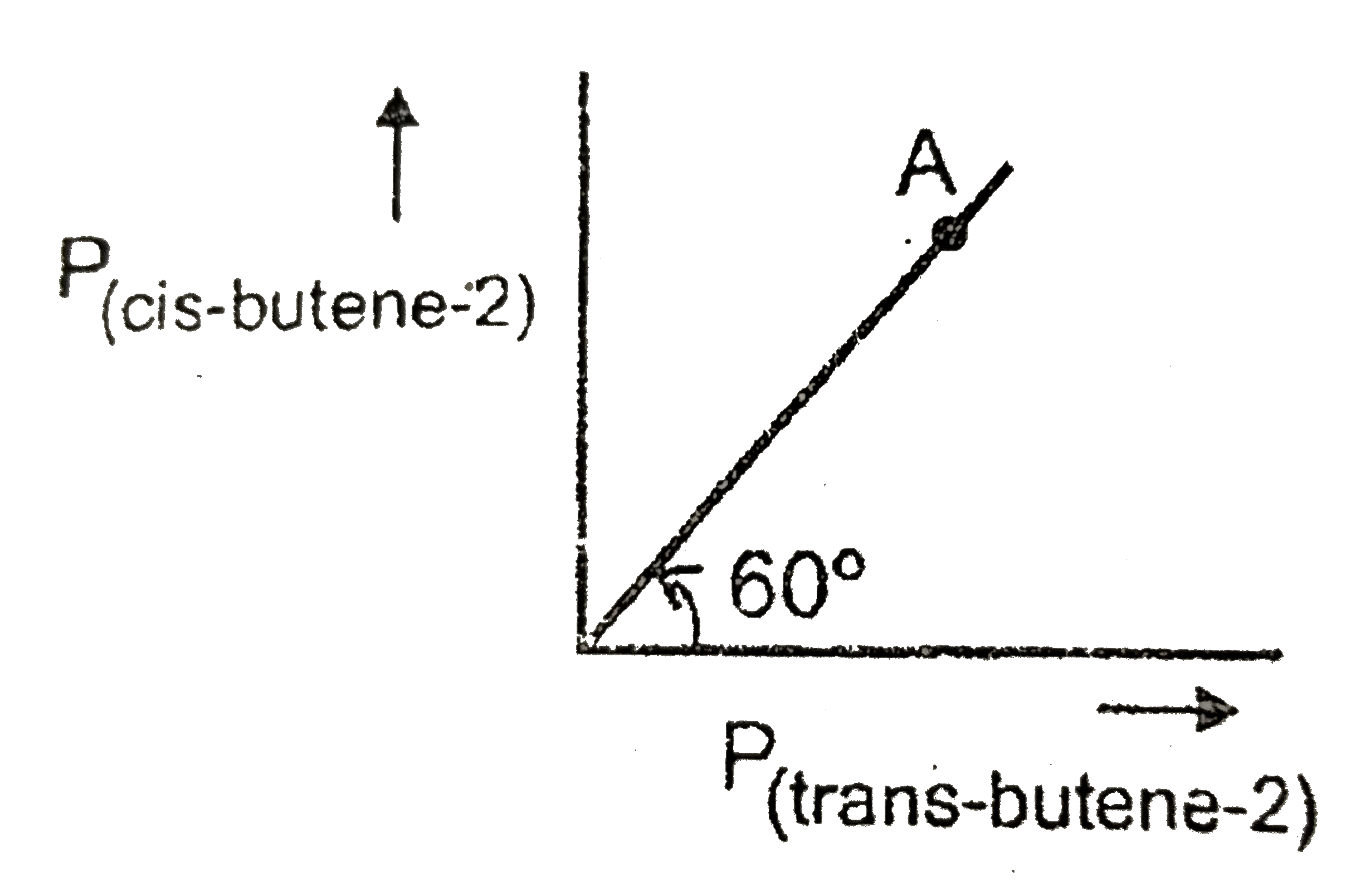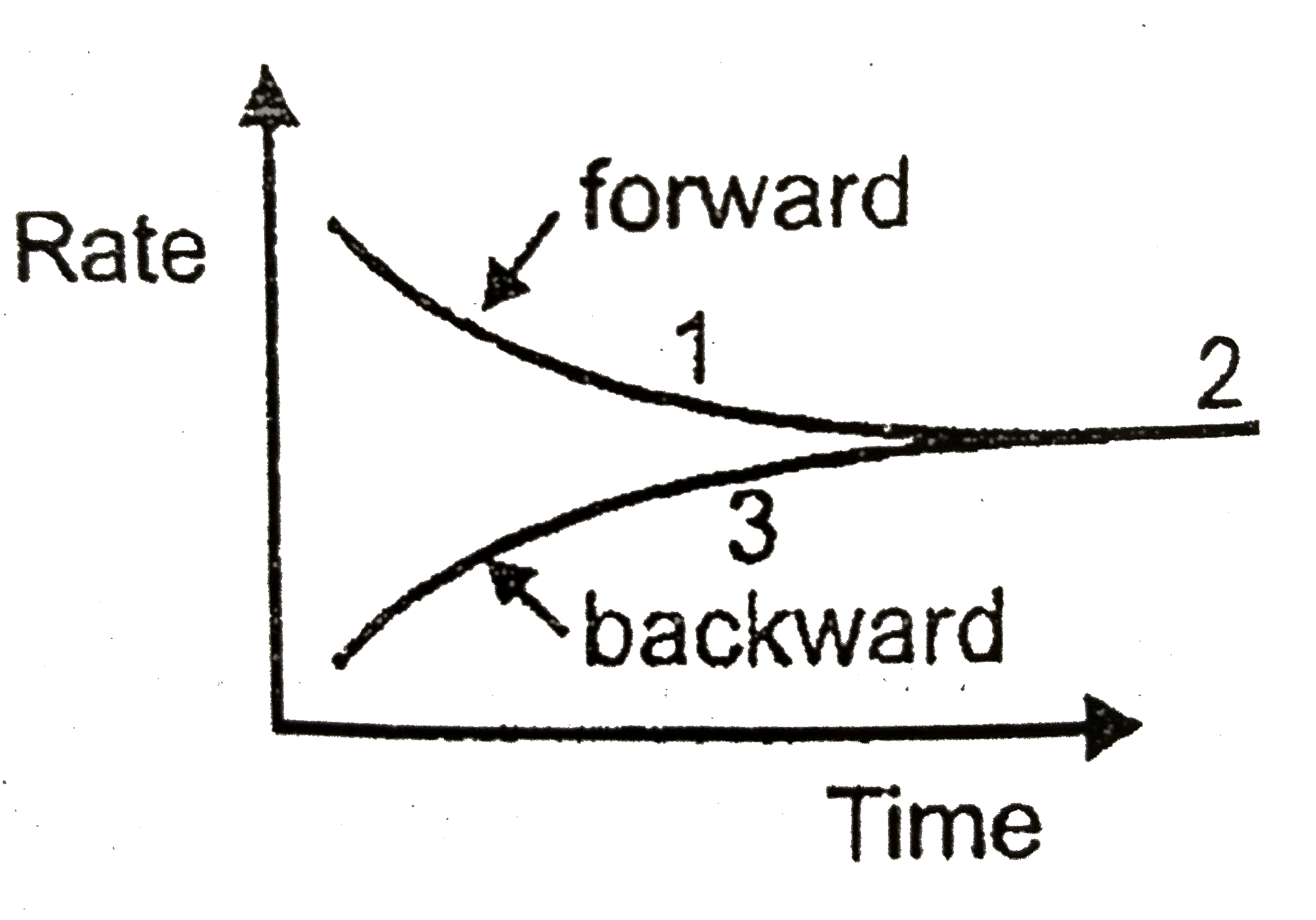Complete Solutions to Advanced Level Problems (Part-1) of chapter CHEMICAL EQUILIBRIUM of Class 11 book with complete answers and questions
| Class 11 | CHEMISTRY |
| Chapter | CHEMICAL EQUILIBRIUM |
| RESONANCE | Advanced Level Problems (Part-1) |
| Number Of Questions | 31 |
| Academic Year | 2023-24 |
The standard Gibbs energy change at 300 K for the reaction `2A hArr B + C` is `2494.2 J.` At a given time, the composition of the reaction mixture is `[A] = 1/2, [B] = 2 and [C] = 1/2.` The reaction proceeds in the :
`[R = 8.314 J//K//mol, e = 2.718]`
View Solution1 mol of `N_(2)` and 2 mol of `H_(2)` are allowed to react in a 1 `dm^(3)` vessel. At equilibrium, `0.8` mol of `NH_(3)` is formed. The concentration of `H_(2)` in the vessel is
View SolutionFor the following mechanism, `P + Qoverset(K_(A))underset(K_(B))hArr PQ`
`overset(K_(C))underset(K_(D))hArr` R at equilibrium `([R])/([P][Q])` is: [K represents rate constant]
View SolutionSelect the reaction for which the equilibrium constant is written as `[MX_3]^2=K_(eq)[MX_2]^2[X_2]`
View SolutionWhat should be the value of `K_(c)` for the reaction `2SO_(2_((g)))+O_(2_((g))hArr2SO_(3_((g)))`. If the amount are `SO_(3)=48g`. `SO_(2)=12.8 "and" O_(2)=9.6` at equilibrium and the volume of the container is one litre?
View SolutionIf `0.5 `mole `H_(2)` is reacted with 0.5 mole `I_(2)` in a ten `-` litre container at `444^(@)C` and at same temperature value of equilibrium constant `K_(C)` is 49, the ratio of `[Hl]` and `[l_(2)]` will be `:`
View Solution4.5 moles each of hydrogen and iodine heated in a sealed ten litre vessel. At equilibrium, 3 moles of HI were found. The equilibrium, 3 moles of HI were found. The equilibrium constant for `H_(2)(g)+I_(2)(g)hArr 2HI(g)` is
View SolutionIn a `20` litre vessel initially each have `1-1` mole. `CO,H_(2)OCO_(2)` is present, then for the equilibrium of `CO+H_(2)OhArrCO_(2)+H_(2)` following is true:
View SolutionAt 1000 K, the value of `K_(p)` for the reaction: `A(g) + 2B(g)hArr3C(g) + D(g)` is `0.05` atmosphere. The value of `K_(c)` in terms of R would be:
View SolutionIn which of the following reactions is `K_(p)ltK_(c)`?
View Solution`K` for the synthesis of `HI` is `50`. `K` for dissociation of `HI` is
View SolutionThe `K_(c)` for `H_(2(g)) + I_(2(g))hArr2HI_(g)` is 64. If the volume of the container is reduced to one-half of its original volume, the value of the equilibrium constant will be
View SolutionIn equilibrium `CH_(3)COOH+H_(2)OhArrCH_(3)COO^(-)+H_(3)O^(+)`
The equilibrium constant may change when
View SolutionIn the esterification
`C_(2)H_(5)OH(l)+CH_(3)COOH(l)" an "hArr CH_(3)COOC_(2)H_(5)(l)+H_(2)O(l)`
equimolar mixture of alcohol and acid taken initially yields under equilibrium, the water with mole fraction `=0.333`. The equilibrium constant. Is
View SolutionIn the following reaction started only with `A_(8), 2A_(8)(g) hArr3A_(2)(g)+A_(4)(g)` mole fraction of `A_(2)` is found to `0.36` at a total pressure of `100 atm` at equilibrium. The mole fraction of `A_(8)(g)` at equlibrium is `:`
View SolutionIna `0.25` litre tube dissociation of 4 moles of NO takes place. If its degree of dissociation is `10%`. The value of `K_(p)` for reaction `2NO hArrN_(2) + O_(2)` is:
View SolutionFor the given reaction at constant pressure,
`{:(,nA(g)hArr,A_n(g)),("Initial moles",1,0),("Final moles",1-alpha,alpha/n):}`
Then the correct relation between initial density `(d_i)` and final density `(d_f)` of the system is :
View SolutionOn decomposition of `NH_(4)HS` , the following equilibrium is estabilished: `NH_(4) HS(s)hArrNH_(3)(g) + H_(2)S(g)` If the total pressure is P atm, then the equilibrium constant `K_(p)` is equal to
View SolutionAt room temperature, the equilibrium constant for the reaction P + Q `hArr` R + S was calculated to be `4.32` . At `425^(@)C` the equilibrium constant became `1.24xx10^(-2)` . This indicates that the reaction
View SolutionCalculate `Delta,G^(Ө)` for conversion of oxygen to ozone, 3/2 `O_(2)(g)rarrO_(3)(g)` at 298 K. If `K_(p)` for this conversion in `2.47xx10^(-29)`
View SolutionFor the reaction, `4NH_(3)(g) + 5O_(2)(g)hArr4NO(g) + 6`
` H_(2)O(l)`, `Delta H =` positive. At equilibrium the factor that will not affect the concentration of `NH_(3)` is:
View SolutionThe effect of adding krypton `(Kr)` gas on position of equilibrium, keeping the volume of the system constant is
View SolutionLe-Chatelier's principle is applicable only to a
View SolutionTwo solid comp0ounds X and Y dissociates at a ceritain temperature as follows
`X(s)hArrA(g)+2B(g),K_(P1)=9xx10^(-3)atm^(3)`
`Y(s)hArr2B(g)+C(g),K_(P2)=4.5xx10^(-3)atm^(3)`
The total pressurre of gases over a mixture of X and T is :
View SolutionThe value of `DeltaG^(@)`for the phosphorylation of glucose in glycolysis is `15KJ//mol`. Find the value of `K_(eq) "at" 300 K`.
View SolutionWhich of the following statements is correct for a reversible process in a state of equilibrium ?
View SolutionFor the following isomerisation reaction
`ci`s-butene-`2hArrtrans-`butene-2 `K_(p)=1.732`

Which of the following statement is true at point `A`?
View SolutionIn the reaction
`PCl_(5)(g)hArrPCl_(3)(g)+Cl_(2)(g)`
a graph in plotted to show the variation of rate of forward and backward
reactions against time. Which of the following is correct?

`QgtK ` `Q=K ` ` QltK`
View SolutionFor the reaction `PCl_(5(g))hArrPCl_(3(g))+Cl_(2(g))`, the forward reaction at constant temperature is favoured by
View SolutionFind out `InK_(eq)` for the formation of `NO_(2)` from `NO` and `O_(2)` at `298 K`
`NO_(g)+(1)/(2)O_(2)hArrNO_(2)g`
Given: `DeltaG_(f)^(@)(NO_(2))=52.0KJ//mol e`
`Delta_(f)^(@)(NO)=87.0KJ//mol e`
`Delta_(f)^(@)(O_(2))=0KJ//mol e`
View SolutionIf a reaction vessel at `400^(@)C` is charged with equimolar mixture of `CO` and steam such that `P_(CO)=P_(H_(2)O)=4` bar what will be that partial pressure of `H_(2)` at equilibrium if `K_(P)=9`
`CO+H_(2)OhArrCO_(2)+H_(2)`
View Solution
Advanced Level Problems (Part-1) questions and complete solutions for chapter CHEMICAL EQUILIBRIUM of RESONANCE ENGLISH of Class 11
All Exercises from RESONANCE Class 11 CHEMISTRY CHEMICAL EQUILIBRIUM
- (MSPs)
- Advanced Level Problems (Part-1)
- Advanced Level Problems (Part-2)(Section-1)
- Advanced Level Problems (Part-2)(Section-2)
- Advanced Level Problems (Part-2)(Section-3)
- Advanced Level Problems (Part-3)(Stage-1)
- Advanced Level Problems (Part-3)(Stage-2)
- Advanced Level Problems (Part-3)(Stage-5)
- Board Level Exercise
- Exercise-1 (Part-1)
- Exercise-1 (Part-2)
- Exercise-2 (Part-1)
- Exercise-2 (Part-2)
- Exercise-2 (Part-3)
- Exercise-2 (Part-4)
- Exercise-3 (Part-1)
- Exercise-3 (Part-2)
- INORGANIC CHEMISTRY(Metallurgy)
- ORGANIC CHEMISTRY(Alkyl Halide, Alcohol,Phenol,Ether)
- PHYSICAL CHMISTRY (CHMICAL EQUILIBRIUM)
- Solved examples